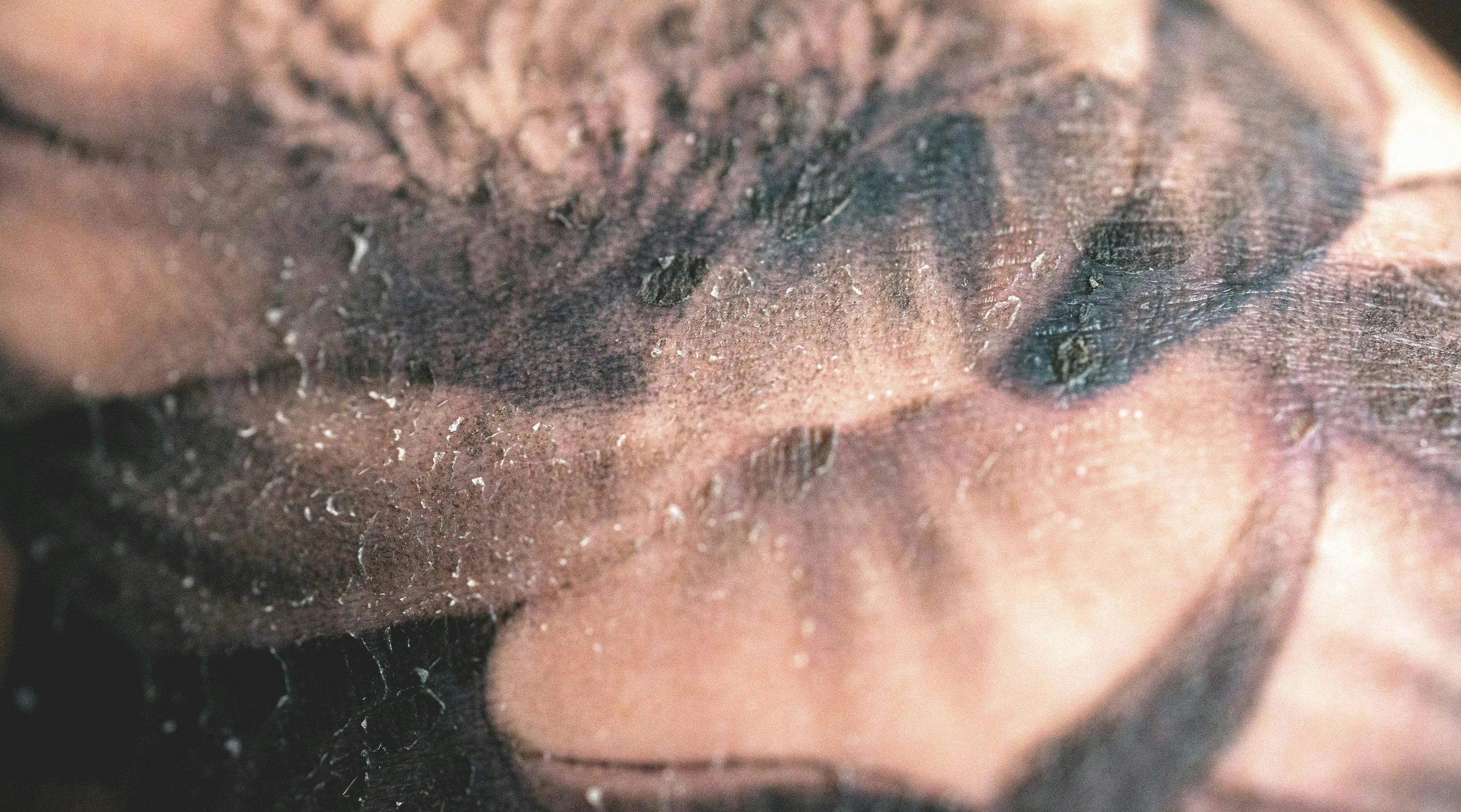If you’ve just received a new tattoo, chances are you’ve put a good amount of time, thought, and money into it.
For most of us, tattoos are a valuable piece of art to be cherished for years to come, whether it holds personal meaning or is simply an admirable design.
Therefore, ensuring that a tattoo heals properly is just as important as getting the tattoo itself.

Just like every tattoo artist has their own unique style, they also have their preferred aftercare methods.
Some might advise you to use specific products or brands, while other instructions are a bit more controversial, like dry healing a tattoo.
What is Dry Healing a Tattoo?
Dry healing is an aftercare method that doesn’t involve using any care products and instead just relies on the exposed area to repair itself on its own.
It may seem appealing to trust our bodies and keep additional products out of the equation, but this procedure does come with its own set of risks.
Is Dry Healing a Tattoo a Bad Idea?
Some sources will tell you that dry healing is a healthy, all-natural way to let your new tattoo go through the healing process. While advice might vary per artist, we highly advise against dry healing your new tattoo.
Read Also: Tattoo Aftercare Do's and Don'ts
Those who prefer dry healing are often concerned that lotions and creams will cause reactions in the healing process, and prefer to keep things as natural as possible.
Some products contain alcohols, chemicals, or artificial additives that will definitely irritate a wound. These products should always be avoided.
However, if you’re using trusted, tattoo-friendly products with safe ingredients, there is only benefits on applying them to your skin.
Always speak with your tattoo artist to advise you on which products they recommend—they’ll know which are best through knowledge and experience.
What Happens if your Tattoo Gets Too Dry?
Letting a tattoo become too dry can introduce itchiness and irritation. This might increase your tendency to scratch the area, which is always something to avoid when healing a tattoo.
When healing any wound, the area will eventually dry out and scab.
This process is your body’s natural response to repair the skin— the wound is no longer open and exposed, and can focus on recovery. The dried scab protects the tissue from any outside bacteria or germs getting into the wound.
In the case of a new tattoo, it’s not only important to heal the skin properly, but also to preserve the artwork as accurately as possible.
While it’s natural for a tattoo to undergo a bit of scabbing, allowing the area to dry out too much can lead to a variety of different issues, including:
-
Cracking of the skin or scab
-
Excessive peeling
-
Bleeding
-
Reopening of the wound
-
Possibility of the scab ripping off before it’s healed
Read also: Is tattoo cracking normal?
As a result, these issues can then lead to long-term complications with your tattoo. Some of these complications are:
-
Scarring
-
Distortion of the original tattoo design
-
Loss of color vibrancy
-
Changing of ink color
-
Bumpy or raised skin under the tattoo
Should You Moisturize a Healing Tattoo?
If you have read any of our posts, you should know the answer by now.
Aftercare is the most crucial step in healing a tattoo, and moisturizing regularly is a huge key to success. It’s recommended that you moisturize the area 2-3 times per day, although the need for hydration might differ from person to person.
You can read our tattoo moisturizing guide for more helpful advice.
When using any product to take care of your tattoos, remember to make sure they are tattoo-specific, as they will help your tattoos not only to stay healthy, but to look better.
While it’s vital that the area is treated regularly, it is possible to over-moisturize your tattoo.
Too much moisture on a healing wound can suffocate the area and create a thriving environment for the growth of bacteria. If the skin doesn’t have sufficient access to fresh air, it’s likely to create an infection.
In short: not too little, but not too much!
Over-moisturized tattoo vs correct amount of moisturizer:

Read Also: How Often Should I Moisturize My Tattoo?
Dry Healing Vs. Wet Healing a Tattoo
The difference between dry healing and wet healing a tattoo is just how it sounds: with one method the tattoo is either kept dry and untouched, and with the other it’s treated with specialized products and protected with a tattoo bandage.
- Dry Healing
Aside from the necessary washing and cleaning, those who choose to dry heal a tattoo do not apply any additional products such as ointments and lotions.
Instead, they allow the tattoo to dry naturally while completely exposed to the open air. Even with this process, the tattoo still needs to be protected from the sun, tight clothing, or being unnecessarily touched.
- Wet Healing
Wet healing does include the application of tattoo care products and will usually require a wrap to protect the area, as recommended by your tattoo artist.
These aftercare products are used to keep the tattoo moisturized and healthy while still allowing the area to breathe.
In this case, drying out the tattoo should be avoided, as it could compromise the healing and future quality of the tattoo.
Final Thoughts
If you’re wondering which is the best way to care for your new tattoo, we strongly recommend wet healing over dry healing.
When the tattoo is kept hydrated, it can properly heal itself without the risk of irritation, and therefore ensures it will remain beautiful for years to come.
Always utilize your tattoo artist as a knowledgeable resource for which products and procedures are best for successful healing. After all, your new ink is their artwork too—they want the best for both you and your tattoo!


